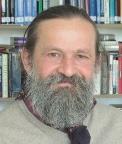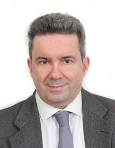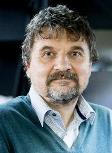|
Plenary sessions
1. Monica SIROUX, INSA Strasbourg ICUBE, University of Strasbourg, France
Analysis of micro cogeneration systems in the context of smart energy grids
Micro cogeneration (micro-CHP) is a technology that generates heat and electricity in the same time for residential buildings. The Micro cogeneration systems are an advantageous means of producing decentralized green energy and offers significant benefits: reduced primary energy consumptions, reduced CO2 emissions, avoidance of central plant and network construction. In the context of Smart Energy Grids, Micro-CHP technology can contribute to the transition of the traditionally centralized energy supply system towards a more sustainable system. The aim of this paper is to give an overview on micro-CHP systems and technologies in the context of Smart Energy Grids and to present recent R&D activities carried out by INSA Strasbourg ICUBE. Furthermore, the present paper examines a variety of possible micro-cogeneration technologies to be coupled with an electrical vehicle in the context of energy transition. A numerical tool has been developed to simulate the interactions between micro combined heat and power systems, a residential building and the electric grid. Results show the relevance of the coupling between electric vehicles and micro cogeneration electricity production in the context of energy transition.
2. Anton ANDRONIC, Institute for Nuclear Physics, University of Münster, Germany
Big sensors for the smallest particles - studying Big Bang matter at the Large Hadron Collider
Collisions of nuclei at high energies produce deconfined quark-gluon matter, a state of matter which prevailed in our Universe in its first 10 microseconds of existence. I will discuss how we study the properties of this state of matter and its still-mysterious transition to hadrons with confined quarks and gluons, like the common protons and neutrons which make up the atomic nuclei. We employ the Large Hadron Collider at CERN, where we investigate billions of collisions using large, very sensitive and very fast detectors to measure in 3D the trajectories of the thousands of particles produced in such collisions and also identify them. This information allows us to reconstruct the state of deconfined matter and determine quantitatively its properties, for instance that the quarks and gluons form hadrons at a temperature of about 100000 larger than that in the center of our sun.
3. Gianfranco CHICCO, Dipartimento Energia “Galileo Ferraris”, Politecnico di Torino, Italy
New trends for active distribution grids
Many drivers are determining continuous changes in the structure and operation of distribution grids. In addition to the now long-lasting effects introduced by the smart grid paradigm, a number of new trends are emerging. Relevant aspects include the impact of the diffusion of renewable energy sources in the operation and economics of distribution systems and microgrids, the development of local solutions for the generation, management and storage of energy at small- and micro-scale, the interactions among different energy networks, the increasing attention towards grid-side and demand-side flexibility, the provision of grid services, as well as the evolutions in progress to establish local energy markets and energy communities. The presentation discusses the key points of the energy transition seen from the points of view of the distribution side and of the local energy system manager at the prosumer side.
4. Grega Bizjak, Laboratory of Lighting and Photometry at Faculty of Electrical Engineering, University of Ljubljana, Slovenia
LEDs and Measurements – How Much Light Source Influence the Measurement Results
When measuring the illuminance or luminance under the light source with a photometer one should always consider the conditions at which the photometer was calibrated. Almost all photometers are today still calibrated with the CIE standard illuminants A, which is usually realized by incandescent lamp at color temperature of 2865 K. On the other hand, the measured light source in most cases is not an incandescent lamp but fluorescent lamp or HID lamp or today more and more LED lamp. For such cases the ISO/CIE 19476:2014 standard with title “Characterization of the Performance of Illuminance Meters and Luminance Meters” recommends use of spectral mismatch correction factors to correct the results. Unfortunately, the spectral mismatch correction factors are difficult to calculate if one does not know the measured spectrum and the spectral responsivity of the used instrument. Not considering the spectral mismatch correction factor will result in larger measurement error as the measurement uncertainty might be rather high. The main question of the presented research is so how large the measurement uncertainty might be when measuring the illuminance under different light sources with a lux meter of class C and no mismatch correction factor is applied
|


|
Monica Siroux is a Full Professor at INSA Strasbourg (National Institute of Applied Sciences) and Icube Laboratory of University of Strasbourg France. She received her PhD in 1996 from the University of Paris XII and the Accreditation to supervise research in 2008 from University of Valenciennes France. Between 2013-2019 Professor Siroux was Director of the Energy and Electrical Engineering Department in INSA Strasbourg and Director of a Research Chair "Innovative Walls”. She leads a group of researchers and PhD students. Main field of her research are Energy efficiency in buildings and Renewable energy. Professor Siroux published about 100 research papers in refereed international journals and international conferences and supervised over 10 doctoral students. She chaired many international conferences and technical meetings. |
|
Anton Andronic is a Full Professor at the Institute for Nuclear Physicst within the University of Münster since 2018. He received his degree at the University of Bucharest in 1990 and his PhD in nuclear physics in 1998. His interests includes study of the properties of hot and compressed nuclear matter. He has been Postdoc and reasearch associate at GSI Darmstadt between 1998-2005, Staff scientist at GSI Darmstadt between 2005-2018. He received his Habilitation at Technical University Darmstadt in 2015.He is author of about 450 papers in international journals with a total of 40000 citations and h-index 106. Prof. Andronic is Referee for journals Physical Review Letters, Physics Letters B, Physical Review C, Physics Reports, Nuclear Physics A, European Physical Journal A, C; Nuclear Instruments and Methods in Physics Research A, IEEE Transactions on Nuclear Science. He is coorganizer of 8 international workshops and conferences, member of the International Advisory Committee for other 6 workshops/conferences, member of the international collaborations ALICE at the LHC (CERN Geneva) and CBM at FAIR (GSI Darmstadt), member of various boards and committees of those collaborations. Prof. Andronic is also member in PhD defense committees at Universities of Clermont-Ferrand, Darmstadt, Muenster, Nantes, Oslo, Padua, Bari, Strasbourg; member of Habilitation committees at Clermont-Ferrand and Paris-Saclay Universities. |


|
Gianfranco Chicco is a Full Professor of Electrical Energy Systems at Politecnico di Torino (POLITO), Torino, Italy. He received his PhD in Electrotechnics Engineering in Italy in 1992. He received the title of “Doctor Honoris Causa” from the University Politehnica of Bucharest in 2017 and from the University “Gheorghe Asachi” of Iasi in 2018. He is a Fellow of the IEEE (Power and Energy Society). He is the Scientific Responsible of the research group on Power and Energy Systems at POLITO, and the Responsible of the Torino unit of the Italian Consortium ENSIEL. He is the Editor-in-Chief of the journal Sustainable Energy Grids and Networks (Elsevier). He is a Subject Editor of the journal Energy (Elsevier). He is an Editor of IEEE Transactions on Smart Grid, IEEE Transactions on Sustainable Energy, IEEE Open Access Journal of Power and Energy, and Energies. He was the Conference Chair of the 6th World Energy Systems Conference (WESC 2006, Torino, Italy) and the 7th IEEE PES Innovative Smart Grid Technologies (ISGT Europe 2017, Torino, Italy). He is the Chair of the 55th International Universities Power Engineering Conference (UPEC 2020, Torino, Italy). His research interests include His research interests include Power System Analysis, Distribution System Analysis and Optimization, Data Analytics, Distributed Energy Resources, Electrical Load Management, Energy Efficiency, Multi-Energy Systems, and Power Quality. |
|
Grega Bizjak, PhD, is a professor and Head of Laboratory of Lighting and Photometry at Faculty of Electrical Engineering, University of Ljubljana, Slovenia. He is active in the field of lighting and photometry as well as in the field of electrical power engineering. His main research interests in lighting are energy efficient indoor and outdoor lighting, use of daylight, LEDs in lighting applications and especially photometry. Prof. Bizjak is president of Slovenian National Committee of CIE and representative of Slovenia in CIE General Assembly and Division 2. He is also a member of Lux Europa association, Balkan Light Association and past vice-president of CIE |
